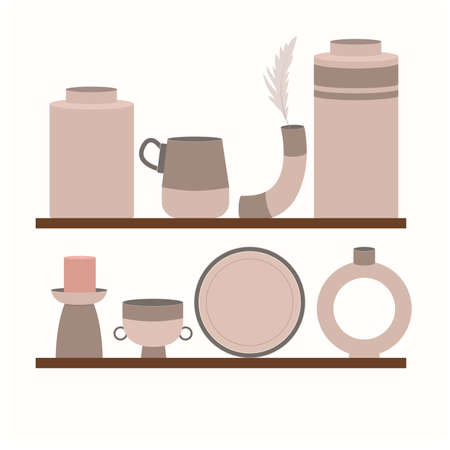1. Introduction: The Subtle Art of Kitchen Energy Flow
In the heart of every British home, the kitchen stands as both a bustling centre of daily activity and a quiet sanctuary for family connection. Beyond its practical function, there is a growing fascination across the UK with how the arrangement of kitchen appliances can influence not only our moods but also our fortunes. While many may dismiss such ideas as whimsical, an increasing number of homeowners are paying attention to the subtle art of energy flow within their kitchens. This gentle awareness of spatial harmony—rooted in centuries-old traditions and adapted to modern British sensibilities—suggests that where we place our kettles, ovens, and refrigerators might quietly nudge our prosperity, health, and overall well-being. As we explore this intriguing intersection between design and destiny, we invite you to consider how the humble layout of your own kitchen could be shaping your everyday abundance.
2. Cultural Foundations: British Homes and the Heart of the House
In the tapestry of British life, the kitchen has always been more than just a utilitarian space; it is the very heart of the home, a place where stories are exchanged over cups of tea and the aroma of Sunday roast lingers in the air. Historically, British kitchens were often tucked away at the back of terraced houses, modest yet inviting, echoing an era when meals were simple and family bonds were forged around a sturdy oak table. The importance of this room transcends its physical boundaries—it symbolises warmth, hospitality, and the quiet strength that sustains households through generations.
As Britain embraced modernity, open-plan designs gained popularity, blending tradition with contemporary living. The once-secluded kitchen now flows into living spaces, becoming a hub for both daily rituals and festive gatherings. This transformation reflects not only evolving architectural tastes but also shifting attitudes towards community and prosperity within the home. Today’s British kitchens are thoughtfully curated environments where appliances—from classic Aga cookers to sleek induction hobs—are strategically placed to enhance both function and ambience.
The Kitchens Evolving Role in British Culture
Era |
Kitchen Features |
Cultural Significance |
|---|---|---|
Victorian & Edwardian |
Enclosed spaces, separate sculleries, coal-fired ranges | Domestic service, formality, hierarchy |
Post-War Mid-20th Century |
Compact layouts, electric ovens, fitted cabinets | Practicality, post-war recovery, family unity |
Modern Day |
Open-plan layouts, integrated appliances, kitchen islands | Social connection, wellbeing, wealth energy |
The kitchen’s placement and design have become central to how wealth energy—an unseen current of abundance and comfort—is cultivated within British homes. Whether it is the comforting clatter of breakfast or friends gathering around a marble-topped island with a glass of wine in hand, each detail contributes to an environment where prosperity can flourish. In honouring both heritage and innovation, British homeowners continue to shape kitchens that nurture not just bodies but spirits—a testament to the enduring power of the home’s beating heart.

3. Placement Patterns: Appliances and Symbolism in a British Context
The kitchen in a British home is not just a place of nourishment but also a subtle theatre of energy interplay, where the arrangement of appliances holds both practical and symbolic significance. Traditional wisdom, often whispered across generations, suggests that the placement of cookers, fridges, and sinks can shape the flow of wealth energy—a concept woven into both folklore and modern design conversations.
Classic Kitchen Triangles: The Flow of Function and Fortune
Many British kitchens are organised around the ‘working triangle’: cooker, fridge, and sink positioned for ease of movement. This pragmatic design is believed to foster efficiency but also echoes deeper esoteric principles. According to some, aligning these elements allows for a harmonious current—where water (sink), fire (cooker), and preservation (fridge) interact without clashing. When these appliances are too close or directly opposite each other, it may create energetic friction: fire confronting water, or abundance locked away rather than circulating freely.
Cooker: The Hearth of Abundance
The cooker traditionally symbolises prosperity—the modern hearth where meals and memories are made. In British context, it is considered auspicious for the cooker to face into the room rather than towards a wall or window, inviting communal warmth instead of letting fortune escape. Some even say that placing a reflective surface nearby can double the perceived abundance created at this spot.
Fridge: Guardianship and Circulation
The fridge’s placement is quietly significant. As the keeper of food—wealth in tangible form—it should be accessible yet not block entryways or crowd corners. British lore suggests avoiding placing the fridge directly opposite or adjacent to the cooker to prevent cold and heat from battling; such tension is thought to disrupt both culinary workflow and the metaphoric flow of wealth.
Sink: Cleansing Pathways
Sinks represent cleansing and renewal. Esoteric wisdom encourages situating them so they do not directly oppose cookers or fridges, as this might symbolically ‘wash away’ good fortune or chill prosperity. A well-placed sink—in line with natural light if possible—supports clarity and fresh starts, reinforcing positive energy throughout the kitchen space.
British Sensibility: Practicality Meets Intuition
Ultimately, British homes blend time-honoured practicality with an intuitive sense of space. Whether guided by building regulations or family tradition, there remains an undercurrent of belief that every appliance has its place—not only for convenience but to quietly nurture the household’s luck, harmony, and ongoing prosperity.
4. Tales from the Larder: True Stories and Folklore
Across Britain, the kitchen is not just a place for culinary pursuits—it’s a storied realm where tradition, superstition, and lived experience converge. The arrangement of kitchen appliances has long been thought to influence the ebb and flow of wealth energy within a home, and no better proof exists than in the tales whispered over cups of tea or tucked away in handwritten family cookbooks.
The Larder’s Luck: Anecdotes from Country Cottages
In rural Dorset, there is an oft-repeated story of Mrs. Beeton-Smythe, who swore her prosperity stemmed from never placing her bread bin next to the cooker. According to local wisdom, heat from the stove would ‘burn away’ good fortune rising with the daily loaf. Her neighbours soon followed suit, moving their bread bins further down the counter—and many claim their pantries became inexplicably fuller that year.
Superstitions Passed Down the Generations
Superstitions about kitchen organisation are as varied as regional accents. In Yorkshire, it’s considered unlucky to store sharp knives out in the open, as “they’ll cut through your money.” Meanwhile, Scottish families often keep their kettles on the left side of the hob to invite abundance, believing that “left-side warmth brings right-side riches.” The table below captures some cherished beliefs found across British homes:
| Appliance Placement | Associated Belief | Region |
|---|---|---|
| Bread bin far from oven | Protects rising wealth | Dorset & Cornwall |
| Knives hidden in drawers | Avoids cutting financial luck | Yorkshire & Lancashire |
| Kettle on left side | Invites prosperity | Scotland & Northumberland |
| Salt jar near entrance | Wards off poverty spirits | Kent & Sussex |
| Toaster facing window | Welcomes new opportunities | London & Midlands |
The Hearth as a Portal for Good Fortune
An old London legend tells of the “wealth draught,” an invisible current believed to sweep through homes at dawn. Householders would align their kitchen tables eastward and ensure nothing blocked the larder door, so this draught might fill their cupboards with abundance. Today, echoes of this practice live on in modern renovations—some homeowners insist on keeping a clear path between fridge and pantry, hoping to channel those same fortuitous energies.
5. Practical Guidance: Enhancing Wealth Energy in British Kitchens
Inviting Abundance with Thoughtful Appliance Placement
In the charming, often compact kitchens of Britain—from Victorian terraces in Manchester to Georgian townhouses in Bath—making the most of every nook is essential. But beyond functionality, the placement of your kitchen appliances can deeply influence the flow of wealth energy. Here are some culturally attuned tips to help you create a harmonious and prosperous atmosphere, tailored to the unique quirks of British home design.
Respecting Quirky Layouts: Embrace Your Space
British homes are renowned for their characterful layouts and snug proportions. Instead of forcing modern appliance arrangements, work with your kitchen’s natural flow. Avoid crowding the hob and sink together; allowing a clear space between them symbolically separates fire and water energies, helping prevent financial tensions from simmering over.
Mindful Appliance Positioning: The Art of Balance
If your fridge stands next to the oven—a common sight in galley-style kitchens—consider placing a wooden bread bin or a lush green herb plant between them. This not only adds rustic charm but also acts as a buffer, harmonising clashing energies and supporting abundance.
Maximising North-East Corners
The north-east corner is traditionally associated with prosperity. In many British kitchens, this may be a humble shelf or awkward alcove. Use it wisely by placing a kettle or coffee machine here to energise morning routines and encourage positive beginnings, subtly inviting new opportunities into your household.
Keep Clutter at Bay: Make Room for Flow
Bespoke cabinetry and built-in solutions are classic features in British homes—use them! Store seldom-used gadgets out of sight. A tidy countertop allows energy (and creativity) to circulate freely, making space for new ideas and financial growth.
Cherish Heritage Touches
Add personal touches that reflect your heritage—a vintage teapot, a family tartan apron, or locally crafted pottery. These items anchor your kitchen’s energy to feelings of gratitude and belonging, amplifying the sense of abundance already present in your home.
By mindfully arranging your appliances and honouring both tradition and modern needs, you can transform even the cosiest British kitchen into a wellspring of wealth energy—where every cuppa feels like a blessing.
6. Conclusion: Stirring the Cauldron of Wealth Energy
As the final notes of the kettle’s whistle echo through a British kitchen, it becomes clear that the placement of our appliances is more than just a question of practicality—it is an invitation to greater prosperity and well-being. Mindfully arranging kitchen elements stirs the cauldron of wealth energy, infusing our homes with both comfort and possibility. Imagine the gentle morning light glinting off a well-placed toaster or the satisfying hum of a fridge positioned with intention; these details may seem small, yet they ripple outward, subtly transforming the atmosphere of our daily lives.
Celebrating Small Rituals
In British culture, we find meaning in everyday rituals—putting the kettle on for tea, baking a Victoria sponge for guests, or preparing Sunday roast. By aligning kitchen appliances thoughtfully, we honour these traditions while inviting abundance. A cooker near natural light or a bread bin nestled away from clutter can shift not only the flow of movement but also the flow of energy, making each culinary ritual feel richer and more nourishing.
Transforming Space and Spirit
The essence of mindful kitchen arrangement lies in its ability to uplift both space and spirit. When every appliance has its rightful place, there’s a sense of ease—a harmonious current that carries us through the day. This subtle alchemy transforms kitchens from mere functional rooms into heart-warming sanctuaries where family stories are told over steaming mugs and laughter mingles with the aroma of supper.
Big Impacts from Modest Changes
Ultimately, it’s not about grand renovations but about celebrating those small shifts—a microwave moved from a drafty corner, a hob given pride of place—that have big impacts. These conscious choices invite wealth energy to settle in our homes, weaving together practicality with positive intention. In British homes old and new, let us cherish this blend of tradition and transformation, knowing that even the tiniest tweak in our kitchens can create ripples of abundance for years to come.

